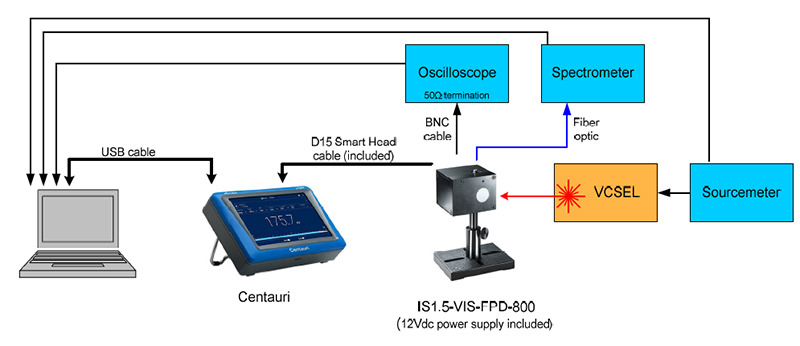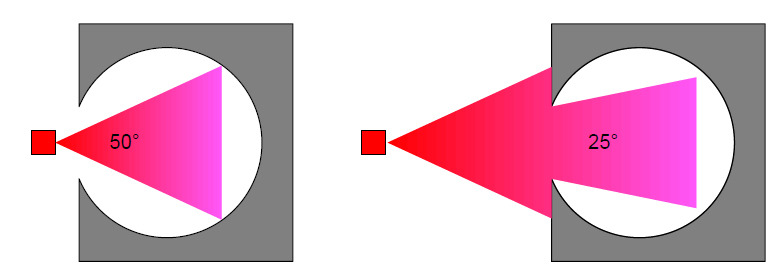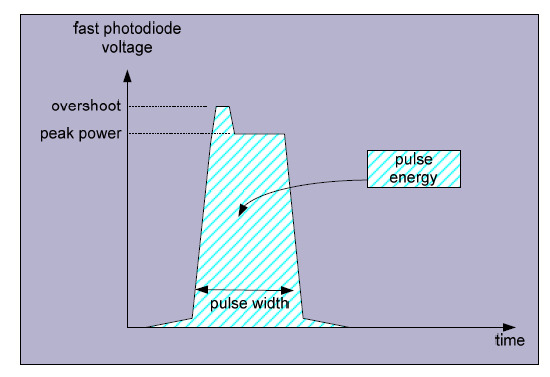When working very close to the sphere's input port, the size of the emitter is the determining factor in defining the field of view. the following table gives the field of view as a function of the emitter size when the emitter is right at the sphere input:
| Emitter size |
<2 mm |
4 mm |
10 mm |
| Field of view (full angle) |
120° |
90° |
80° |
When the source is located at a distance from the input port aperture, both the source size and the distance will influence the field of view.
The following table gives the FOV for a small source at different distances:
| Distance |
10 mm |
20 mm |
30 mm |
40 mm |
| Field of view (full angle) |
90° |
53° |
37° |
28° |
If the source size is not small, the maximum distance allowable can be calculated from this table using simple geometry.
In CW, the VCSEL is emitting a fixed power into the sphere. The IS1.5 provides calibrated absolute power measurement through the D15 smart head cable attached to it. The power measurement can be read using any of Ophir's displays such as Centauri and PC interface such as Juno, Juno+ or EA- 1Ethernet adapter.
The first question one may ask is, can I trust the calibrated photodiode to measure average power when the VCSEL is operated in pulsed mode. Well, as long as the average power and pulse energies do not exceed the specified values, the answer is yes. The linearity and accuracy of the calibrated photodiode was tested at 50ns pulse width and 100KHz repetition rate. The linearity was better than ±1% up to 1.8W average power.
In fact, pulse rates higher than 200Hz appear as CW for the calibrated photodiode. When the repetition rate is lower than 200Hz, the 'Low Frequency' mode should be selected on the meter. This mode will eliminate any measurement instability that might be caused then the meter sample rate and the laser repetition rate are too close. (Note: The "Low Frequency" mode only allows for frequency settings up to 100 Hz. For frequencies between 100 Hz and 200 Hz, a value equal to half of the actual frequency should be used for the setting.)
Ophir's Centauri display can be used to log and analyze measurements at 10KHz either as a standalone meter, or using the StarLab PC software application. In a different paper we show how the Centauri display can be used in an automated environment to measure power at 10KHz using a simple LabVIEW application. When working with pulses in the millisecond range, that might be sufficient for characterizing the pulse shape as well. For reliable measurement when using the 10 kHz measurement rate, the signal's frequency and duty cycle should be considered. A square wave, for example, should have both low and high level periods of at least 500 μsec in order to be properly sampled.
For higher repetition rates, the fast photodiode can be used to visualize the temporal shape of the pulses and provide some important information. The fast photodiode is accessed via the BNC connector on the IS1.5. It is usually connected to a scope and should be terminated with a 50Ω load.




 Ultra-High Velocity
Ultra-High Velocity